CAMPAIGN: RELOCATION OF CRUISE CONTROL SERVO ASSEMBLY

Models: 1984 Corvette, equipped with K34 (Cruise Control)
CONDITION
General Motors of Canada Ltd. has determined that a defect which relates to motor vehicle safety exists on some 1984 Chavrolet Corvette models equipped with Cruise Control. The Cruise Control vacuum solenoid valves may malfunction at any time the engine is rurnning and cruise control engaged, resulting in unexpected engine acceleration. Loss of accelerator control could result in a vehicle crash without prior warning. Should this condition occur, owners are being requested to apply and hold the service brakes, bringing the vehicle to a safe stop and turn the ignition off. To correct this condition, owners are being requested to contact their Chevrolot dealer who will, at no charge, modify the Cruise Control system. This modification will be at no charge to owners.
VEHICLES INOLVED:
All 1984 Chevrolet Corvette modele equipped with RPO K34 (Cruise Control) within the following parameters:
Plant From To ----- ---- -- Bowling Green E5100001 E5151547
All affected vehicles have been identified by the VIN listing provided to involved Dealers with this bulletin. Any Dealer not receiving a listing was not shipped any of the affected vehicles.
DEALER CAMPAIGN RESPONSIBILITY:
Dealers are to service all vehicles subject to this campaign at no charge to owners, regardless of mileage, age of vehicle, or ownership, from this time forward.
CAMPAIGN PROCEDURE:
Refer to Section 4 of the Service Policies and Procedures Manual for the detailed procedure on handling Product Campaigns. Dealers are requested to complete the campaign on all transfers as soon as possible.
OWNER NOTIFICATION:
All owners of record at the time of campaign release are shown on the attached computer listing and have been notified by first class mail from General Motors. The listings provided are for campaign activity only and should not be used for any other purpose.
PARTS INFORMATION:
Parts required for this campaign should be ordered through regular channels as follows:
Quantity Part Number Per Vehicle Description ----------- ----------- ----------- 25074659 1 Servo Assembly 14091272 1 Servo Bracket 14091225 1 Servo Cable Assembly 14091226 1 Cruise Control Service Kit
Each (Cruise Control Service Kit) P/N 14091226 will consist of the following:
- 1 Ea. Jumper Wire Harness - 1 Ea. 750 mm - 5/32" Vacuum Hose - 1 Ea. Vacuum Hose Tee - 1 Ea. 6 mm Vacuum Hose Plug - 2 Ea. 6 mm Vacuum Hose Caps - 3 Ea. 8 mm Vacuum Hose Plugs - 1 Ea. 8 mm Vacuum Hose Cap - 1 Ea. Servo Bracket Mounting Bolt (Cadmium) - 3 Ea. Servo Mounting Screws - 3 Ea. Servo Mounting Washers - 3 Ea. Servo Mounting Grommets - 3 Ea. Grommet Sleeves - 5 Ea. Conduit Clips - 1 Ea. Tie Down Strap - 1 Ea. Instruction Sheet & Illustration
PARTS AND LABOUR CLAIM INFORMATION:
Credit for the campaign work performed will be paid upon receipt of a properly completed campaign claim card or RAPID terminal transmission in accordance with the following:
Repair Code Operation Time Allowance ----------- --------- -------------- 2A Relocate and install P/N 25074659 1.1 (Servo Assembly), P/N 14091225 (Servo Cable Assembly), P/N 14091226 (Cruise Control Service Kit), according to the instuctions outlined in this bulletin.
Time allowance includes 0.1 hour for dealer administrative detail associated with this campaign. Parts credit will be based on dealer net plus 30% to cover parts handling.
SERVICE PROCEDURE
The relocation of the servo assembly is to be performed per the following procedure:
1. After obtaining the service kit P/N 14091226, servo P/N 25074659, cable P/N 14091225, and bracket PIN 14091272 read the instructions carefully and familiarize yourself with the components involved.
2. Raise hood and disconnect the negative battery cable at the battery.
3. CAUTION: The emission purge canister may contain liquid and/or vaporous fuel. To avoid potential for explosion during subsequent steps that may utilize an open flame or other heat source for soldering and shrinking heat-shrink tubing, the emission purge canister must be removed, vapor lines plugged and lower wheel house area ventilated in accordance with the following instructions (refer to drawings in Figure #1):
Disconnect the two purge hoses from the steel lines at the frame. Cap and plug the lines and the hoses with supplied caps and plugs. Remove the canister purge solenoid bolt located on the canister bracket. Unplug the electrical connector at the solenoid. Remove the bolt from the canister mounting strap. Remove the canister from the vehicle. The canister drain hose at the bottom of the canister must also be plugged and removed from the vehicle.
4. Remove air cleaner and disconnect the cruise control cable at the throttle and at the engine bracket. Cut and remove all cable ties holding the servo cable.
5. Disconnect both the small and larger diameter hoses at the servo.
6. Remove two bolts holding servo bracket to vehicle chassis and disconnect electrical connector at back of servo. Remove servo bracket and attached servo and servo cable. SCRAP ALL MATERIALS removed in the previous paragraph. ---------------------
7. Remove the smaller of the two hoses that were connected to the servo at its other end where it connects to a coupling tee and use the cap provided in the kit to plug the opening created by removing this hose.
8. Remove the two outboard vertical brace mounting bolts located at the top of the brace near the battery. Position the servo bracket supplied in the kit over these two holes as in Figure #2 and use the original top brace bolt to mount the bracket. The cadmium bolt supplied in the kit must be used to secure the bottom of the bracket in order to supply a grounding location for the black wire on the new servo harness in the kit. Locate the grounding ring terminal on the new bottom bolt before securing the bracket with the new bolt. Tighten the bolts to the original torque of 20-27 N.m.
9. Locate and mount new servo on servo bracket as shown in Figure #2. Press grommmets in bracket holes and insert sleeves in grommets prior to attaching servo to bracket with screws and washers provided. Note that washers are to be installed between servo and bracket. Mounting servo on bracket before first mounting the bracket will not allow bracket to be mounted properly.
10. Attach servo cable provided in kit to throttle linkage and engine bracket just as the former cable was attached. Route the new cable as shown in Figure #3 to the servo bracket and connect it to the servo bracket and servo bead chain per Service Manual specifications.
11. Cut smaller vacuum hose running from the cruise check valve to the vacuum reservoir and install the hose coupling tee provided in the kit as shown in Figure #4. Install the hose provided in the kit to the tee and attach the other end of the hose to the vacuum input port of the cruise servo.
12. Locate the larger of the vacuum hoses which was disconnected from the original servo where it goes through the front of dash and re-route the hose to the new servo position. At this time, trim the hose between where it passes through the front of dash and where it will now be connected to the new servo. Make sure there are no kinks in this hose after installation.
13. Install supplied connector harness assembly by attaching connector to servo and installing rosebud in hole provided on servo bracket. Route additional harness down along vertical brace until intercepting the path of the hoses which run toward the front of the car. Route the harness along the same path as these hoses located inboard of the left wheel well until they reach the previous servo location as shown in Figure #5. Use the non-restrictive plastic retainer along the vertical brace, and the five conduit clips along the rest of the routing.
14. Locate the breakout position of the servo wiring in the forward lamp harness and take off the tape surrounding the servo breakout. Cut and tape back the black wire to the forward lamp harness. Pull the servo wires out of the convoluted conduit until they reach the splices on the new servo harness. Retape the original breakout position to cover the other exposed wiring.
15. Cut off the original servo connector and discard. Splice the four remaining wires to their respective mates located in the new servo harness (supplied in the kit). Use the splice clips attached to the new servo harness, crimp and solder. Slide the shrink tubing down over each splice and heat to shrink per recommended practices. Cover the splices with the extra length of convoluted conduit supplied on the harness. See Figure #6.
16. Recheck the routing of all cables, electrical harnesses and vacuum hoses and use cable ties where needed.
17. Detach left front upper wheelhouse panel assembly from hood inner panel and clean surfaces (outer mounting hole area) of both panels. Apply continuous bead of body caulking compound (RTV) along full length of wheelhouse panel's top surface outer edge; outboard of mounting screw holes as shown in Figure #7. Attach wheelhouse panel to hood inner panel and apply additional caulk, as necessary, to properly seal gap between panel surfaces in areas both forward and rearward of mounting holes.
18. Reinstall the purge canister. Place the canister in its original position. Unplug the drain hose and route it through the clip on the skid plate. Reinstall the mounting strap making sure the canister is rotated to the proper mounting position as shown in Figure #1. Unplug and uncap the corresponding lines and hoses. Reinstall the hoses to the lines with the original clamps. Plug in the electrical connector to the canister purge solenoid and reinstall the solenoid and cover to its original position.
19. Reattach the negative battery cable.
20. Replace the air cleaner assembly and all attaching hardware.
21. Road test the complete cruise control system.
INSTALLATION OF CAMPAIGN IDENTIFICATION LABEL
Clean surface of radiator upper mounting panel and apply a Campaign Identification Label. Make sure the correct campaign number is inserted on the label. This will indicate that the campaign has been completed.
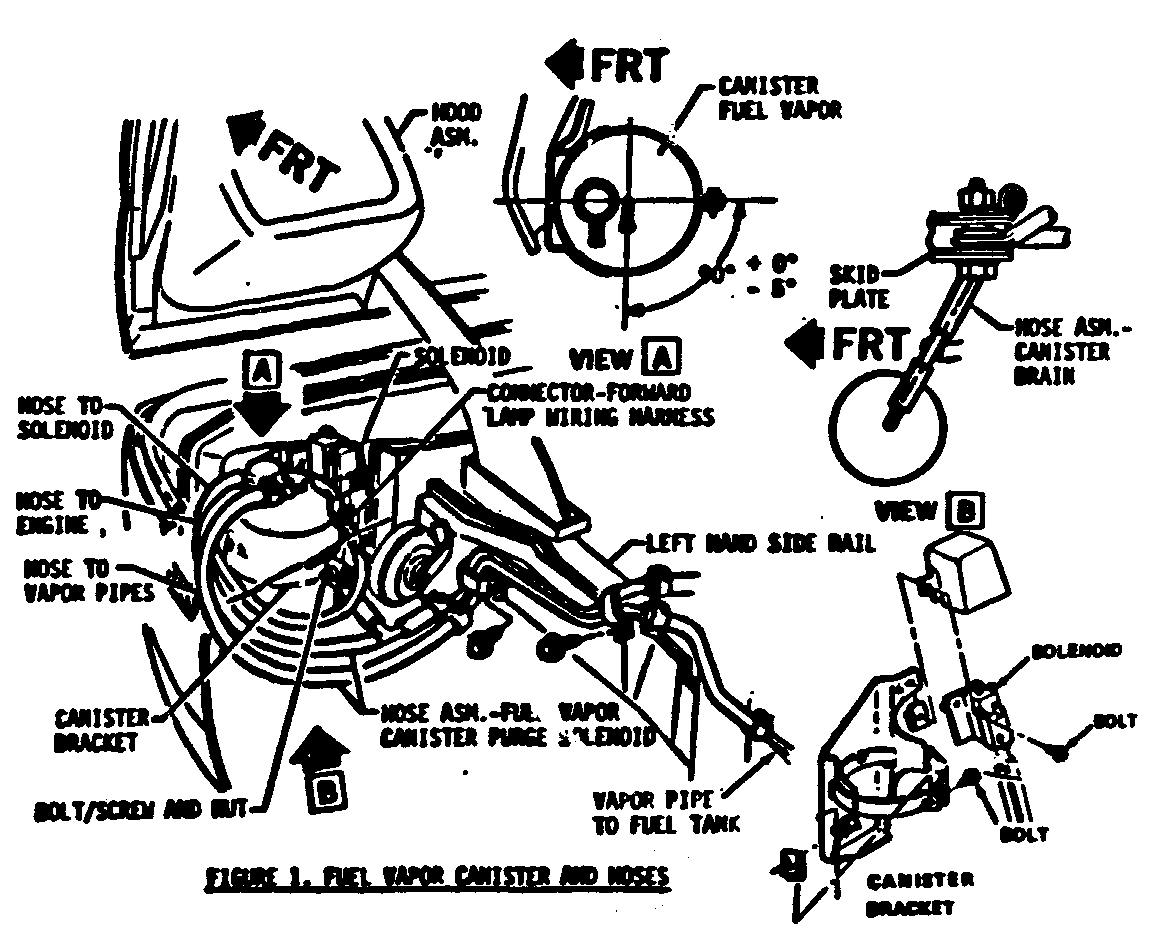
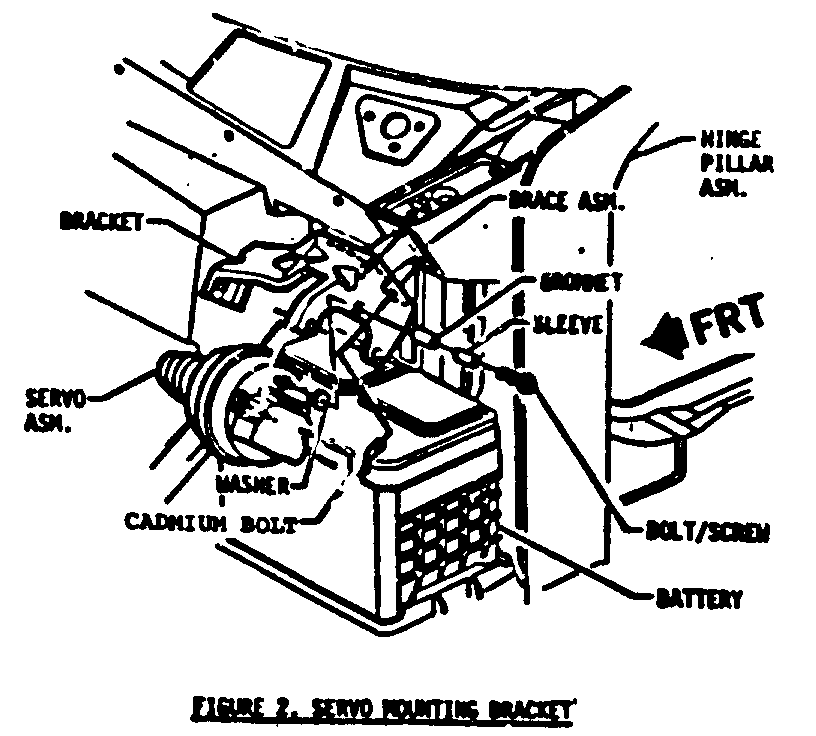
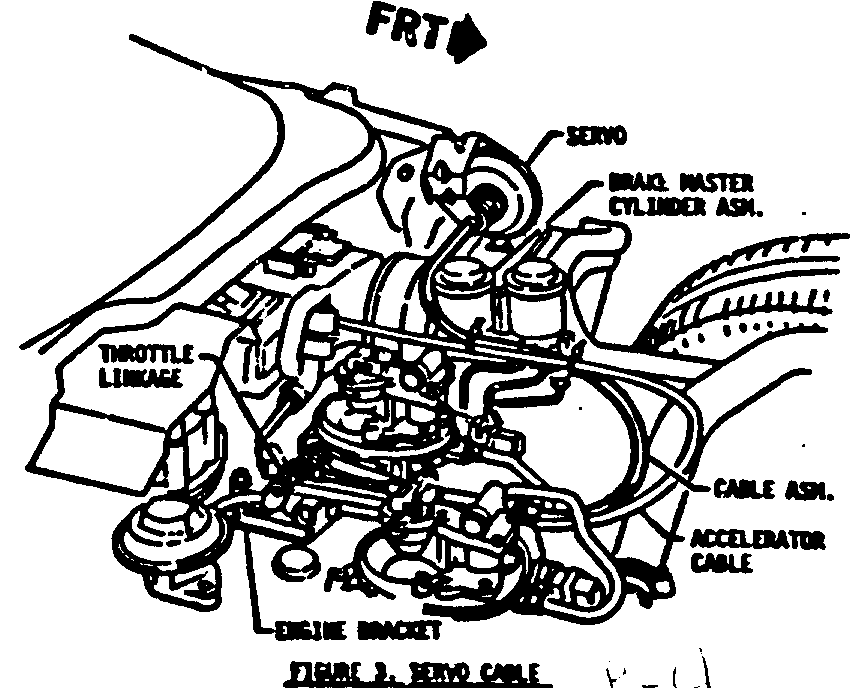
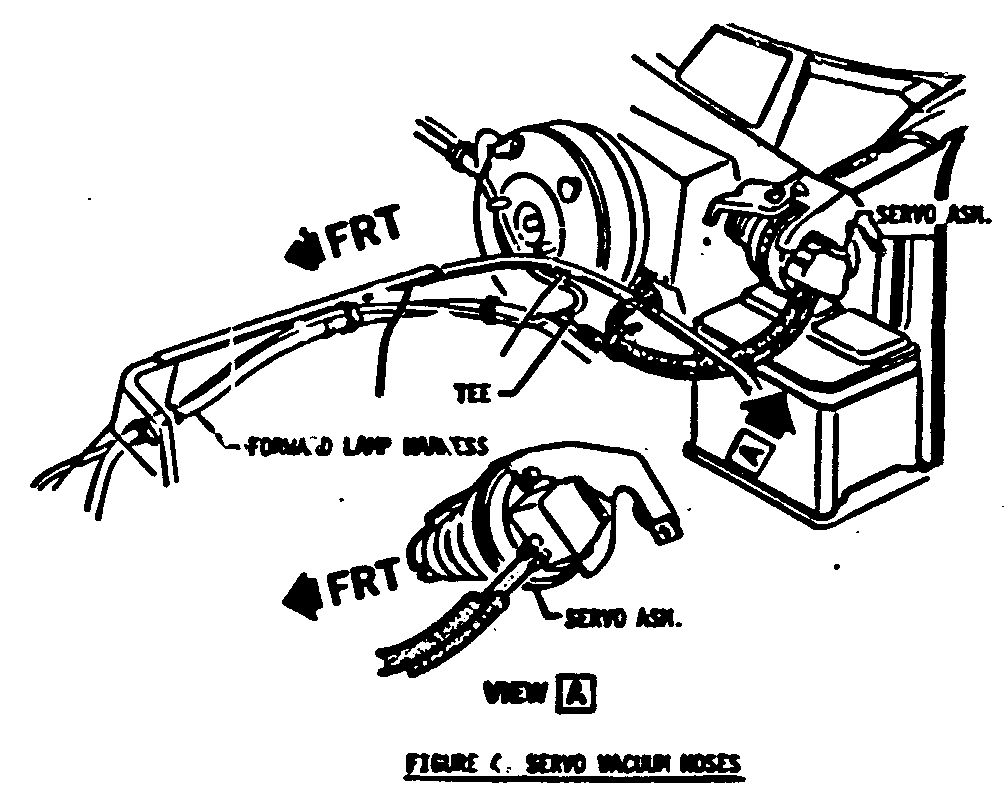
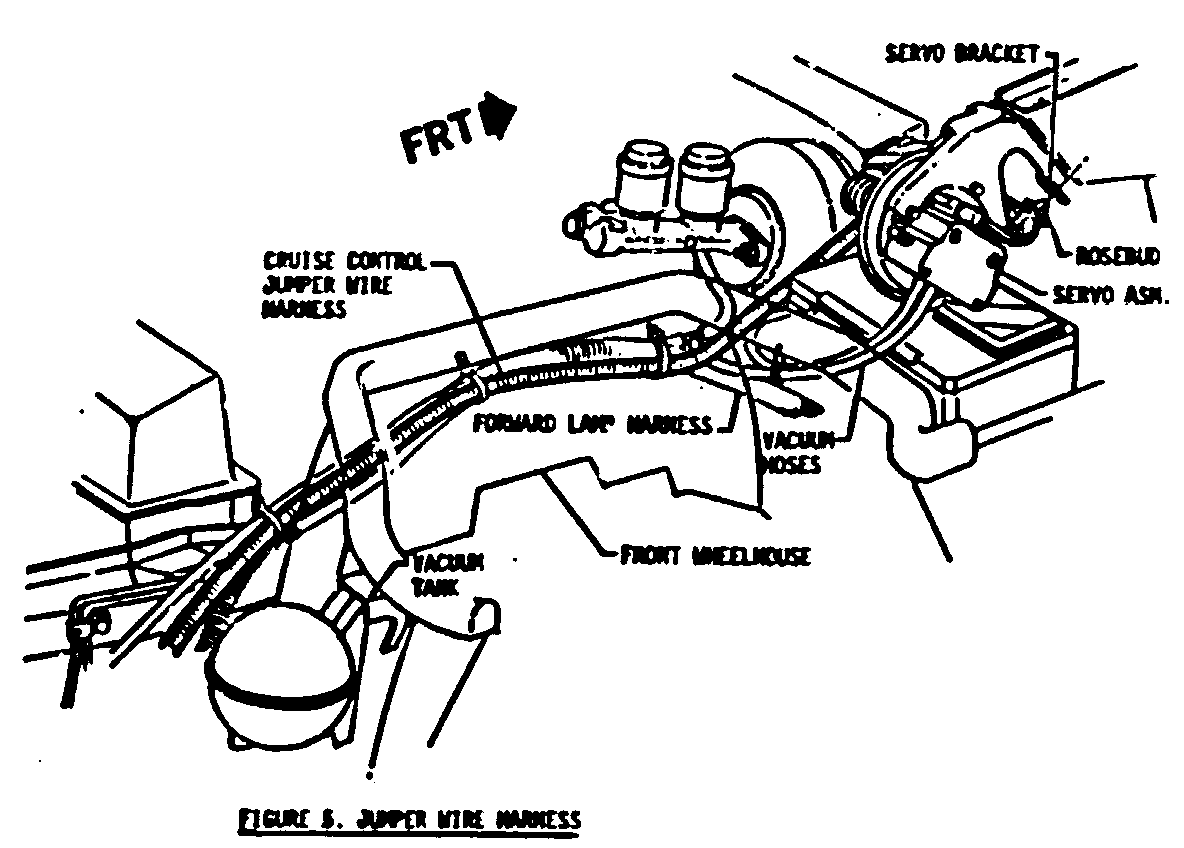
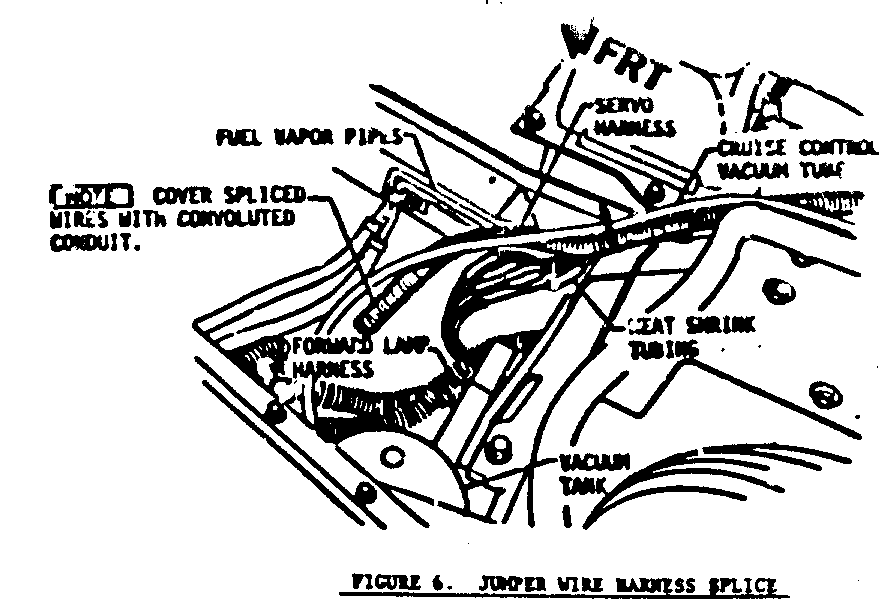
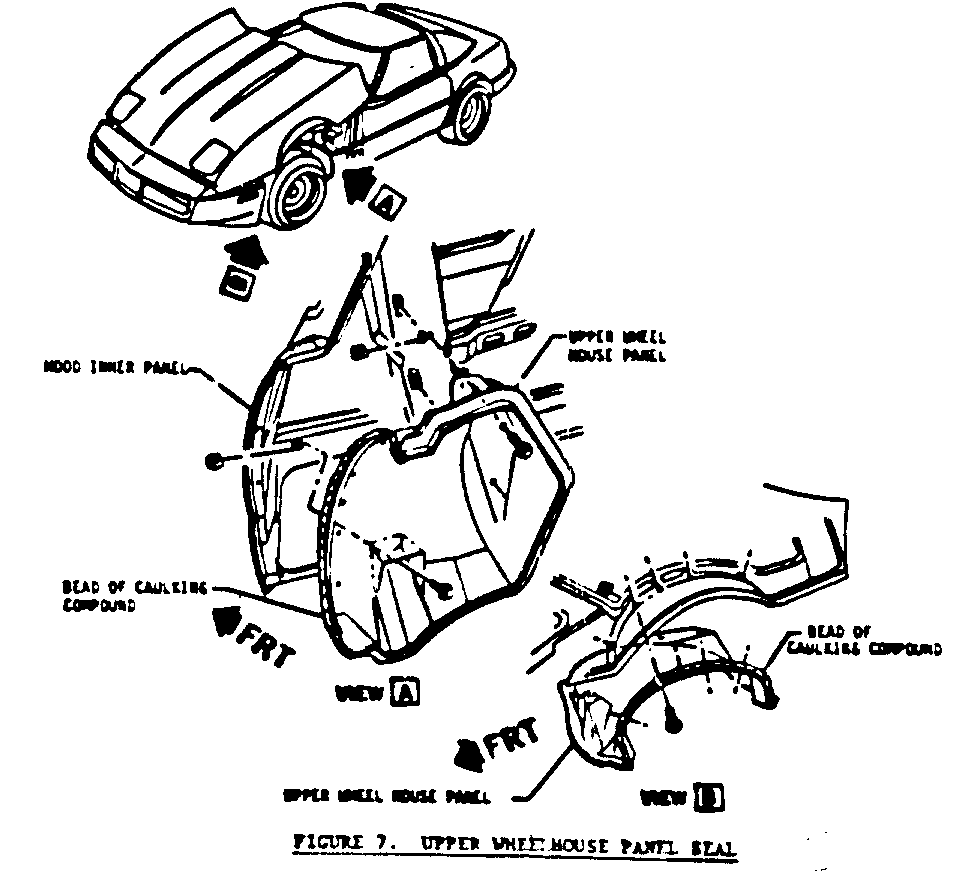
General Motors bulletins are intended for use by professional technicians, not a "do-it-yourselfer". They are written to inform those technicians of conditions that may occur on some vehicles, or to provide information that could assist in the proper service of a vehicle. Properly trained technicians have the equipment, tools, safety instructions and know-how to do a job properly and safely. If a condition is described, do not assume that the bulletin applies to your vehicle, or that your vehicle will have that condition. See a General Motors dealer servicing your brand of General Motors vehicle for information on whether your vehicle may benefit from the information.
